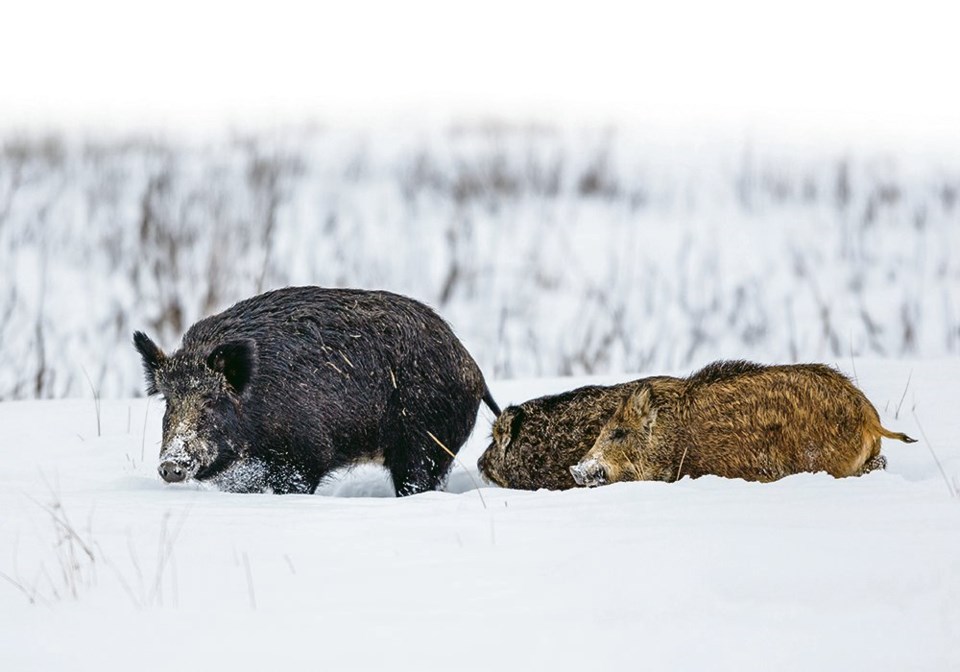WESTERN PRODUCER — Wild pigs are a growing problem for farmers and ranchers and, as predicted more than 40 years ago, they are a threat as a disease vector for the domestic swine industry.
Pigs have lived free on the Canadian landscape since the first ones escaped from farms in Central Canada long before there was a Canada. Over time feral swine interbred with wild boar, a newer escaped porcine population. The animals thrive on the Prairies, especially in central and northern regions where river valleys, potholes and bushy forest provide ideal habitats.
It is time for everyone to “squeal on pigs,” as an Alberta program recommends. Though frequently seen as a rural problem, the pigs are steadily encroaching on suburban and urban land. In predictable pattern, that might awaken the general citizenry and governments to take more decisive action.
The current wild pig fear in Alberta comes from suggestions that the animals may have found a path into the North Saskatchewan River valley where it winds though Edmonton. That location is dotted with homes and is a recreational greenspace for the city of 1.4 million. A perfect wild pig environment, North America’s largest urban parkland has 160 kilometres of trails and walking paths where the pigs could potentially become a physical threat to city dwellers and their pets.
In general, the pigs’ exploding population and destructive activities are harming the environment and affecting agricultural operations in many areas.
The omnivorous creatures will eat almost anything they find in their environment, which is a significant advantage for them and a disadvantage for everything else. Their rooting, wallowing and winter burrowing modify and disrupt forest floors, sloughs and river and creek lowlands.
As well, wild pigs graze on crops and pastures, eating roots as well as grain. They threaten an estimated 25 North American native plant species, according to American researchers.
Ground-nesting birds and their eggs are also on the pigs’ menus, as are amphibians. And it doesn’t stop here. The pigs will displace deer and elk populations and take over kills from predatory species such as coyotes.
As an invasive species of considerable size and ferocity, wild pigs have few predators large or abundant enough to control their populations.
Beyond their dining interests, the wild pigs pose a significant threat to domestic animals and pets through disease transfer. They can carry or suffer from nearly 100 diseases, which makes them a threat to the agriculture and food industry. They can be a reservoir or vector for reportable diseases such as foot-and-mouth and African swine fever. Should ASF enter either the wild or domestic pig population, it would severely damage Canada’s pork export markets.
State and provincial governments have enacted regional laws that permit hunting and trapping of wild pigs, but this is intensive and expensive. Because they are a pest species, poison is an option but that must be thoroughly studied and approached with care.
Squealer phone and internet reporting options are popping up, but more research is needed to quantify the problem and devise solutions.
Saskatchewan started by increasing the funding for research and placing a moratorium on new wild boar farms, but the price of surveillance is high and extermination even higher.
Even so, both are cheap compared to an outbreak of ASF or foot-and-mouth disease in domestic herds, or the loss of an urban river valley.
Karen Briere, Bruce Dyck, Barb Glen and Mike Raine collaborate in the writing of Western Producer editorials.

